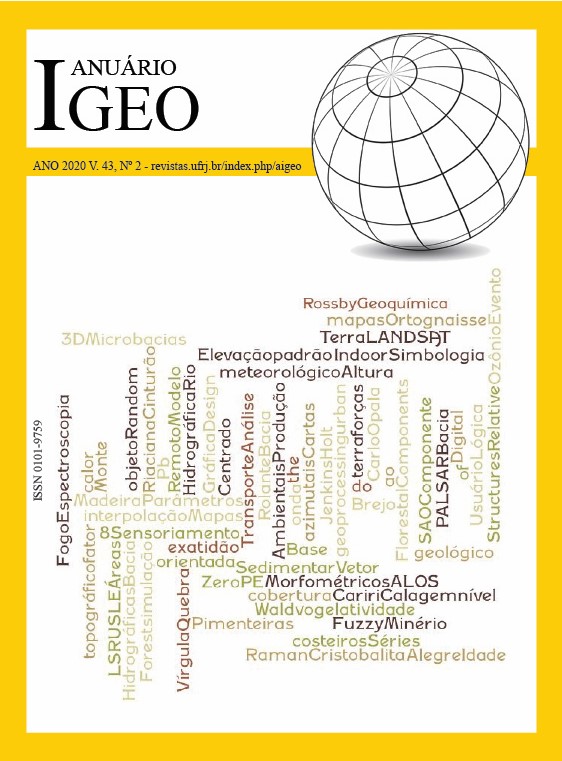Van der Waals-like State Equation for Atmosphere
DOI:
https://doi.org/10.11137/2020_2_55_63Keywords:
Components of the Air, Temperature, ThermodynamicsAbstract
In this paper, we first analyze the atmosphere as a gas mixture per unit mass, which is governed by Van der Waals equation, considering the main components of the air and their respective critical properties (critical temperature TC and critical pressure pC ). After adjusting the corresponding constants and calling them I and D, we find Van der Waals state equation for the atmosphere in this context. Next, we analyze the order of magnitude of the terms in that equation and propose a Van der Waals-like form state equation depending only on D, which we call WD state equation. Additionally, we consider a physical approach for Van der Waals equation for the atmosphere, studying the pressure terms concerning intermolecular forces of repulsion and attraction in the air, and once again we find the previous WD state equation. With this new proposal, we verify that the potential temperature and the equivalent potential temperature hold for the same expressions as those set forth in atmospheric thermodynamics under the analysis of the ideal gas law. However, we discover corrections that depend on D in both the alternative form of the first law of thermodynamics and the virtual temperature.Downloads
References
Bolton, D. 1980. The Computation of Equivalent Potential Temperature.
Montly Weather Review, 108: 1046-1053.
Daubert, T.E. & Bartakovits, R. 1989. Prediction of Critical
Temperature and Pressure of Organic Compounds by
Group Contribution. Industrial and Engineering Chemistry,
: 638.
Guggenheim, E.A. 1945. The Principle of Corresponding States.
The Journal of Chemical Physics, 13: 253.
Jalowka, J.W. & Daubert, T.E. 1986. Group Contribution Method
to Predict Critical Temperature and Pressure of Hydrocarbons.
Industrial & Engineering Chemistry Research,
: 139.
Jenkins, A.C. & Birdsall, C.M. 1952. The Vapor Pressures and
Critical Constants of Pure Ozone, The Journal of Chemical
Physics, 20: 1158-1161.
Joback K.G. & Reid, R.C. 1983. Estimation of Pure-Component
Properties from Group Contributions, Chemical Engineering
Communications, 57: 233.
Kay, W.B. 1936. Density of Hydrocarbon Gases and Vapors, Industrial
and Engineering Chemistry, 28 (9): 1014-1019.
Laird, T. 1996/1997. Ullmann’s Encyclopedia of Industrial
Chemistry, Organic Process Research & Development,
(5): 391-392.
Luiz, A.M. 2007. Física 2. Gravitação, Ondas e Termodinâmica.
São Paulo, Editora Livraria da Física, 294p.
NASA. 2016. National Aeronautics and Space Administration,
Earth Fact Sheet, Available in <http://nssdc.gsfc.nasa.
gov/planetary/factsheet/earthfact.html>. Access in December
, 2017.
Smith, J.M.; Van Ness, H.C. & Abbott, M.M. 2005. Introduction
to Chemical Engineering Thermodynamics. Boston,
McGraw-Hill, 817p.
Trace Gases. Manchester Metropolitan University. 2010. Available
in <https://web.archive.org/web/20101009044345/
http://www.ace.mmu.ac.uk/eae/atmosphere/older/
Trace_Gases.html>. Access in December 05, 2017.
Van der Waals, J.D. 1873. On the Continuity of the Gaseous and
Liquid States. Doctoral Dissertation, Leiden University,
Netherlands.
Wallace, J.M. & Hobbs, P.V. 2006. Atmospheric Science: an introductory
survey, San Diego, Elsevier, 504p.
Young, H.D.; Freedman, R.A.; Sandin, T.R. & Lewis Ford A.
Sears and Zemansky’s University Physics. San
Francisco, Addison-Wesley, 1280p.
Downloads
Published
How to Cite
Issue
Section
License
This journal is licensed under a Creative Commons — Attribution 4.0 International — CC BY 4.0, which permits use, distribution and reproduction in any medium, provided the original work is properly cited.















